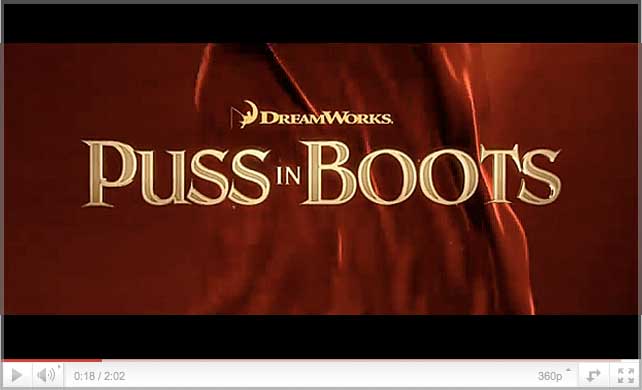Q: What are the benefits and challenges of doing voiceover acting versus live acting (in a traditional film)?
Antonio: It’s a different technique. There are the obvious differences; you don’t have to wear makeup or look good for a camera. You work individually, which gives you the possibility to create the character and improvise a lot with him. The voice is the first thing that they take; it all goes before the animation. They also put a camera in front of you so they can copy your mannerisms and any nuances you may have, and actually put it in the cat later. In this instance, Salma and I actually got to do the voice recording session together. It’s a bit easier to work on this kind of movie because you have a lot more time to do what you need to do; you don’t have to be counting on the weather or the light.
Salma: There’s a lot more freedom in live action. You can do as many takes as you want; you can make a lot of mistakes and it’s okay because they want you to take chances. They encourage you to experiment, to try new things, to go crazy with the character. You do use your body because you can’t just be a robot; you have to become the character when you are saying the lines. The animators use information they get from your body to create the character.
Q: Is it harder to portray emotion when you can’t use your face as a means of expression?
Antonio: It’s actually not. You have to make choices. In becoming this role, you provide this little character that is like this tall with a voice that doesn’t match his body at all. The contrast between a big voice and a little body is a source of comedy—through your voice you are trying to provide the character with a personality, with a soul. You are using, with your voice, something that goes beyond just a sound. We actually do three different versions in Spanish—you film the three lines at once, and they use the same mouth to put all three versions in.
Salma: You always have to trust truth as an actor. You have to trust that you are acting in truth, you really become the character, and you are being the character in that moment. And even if nobody is seeing you, if you are 100% focused in that character, it will come through in the voice. It’s important not to try to compensate for the fact that you’re not there. You may not be there on the set, but a version will be there in the character.
